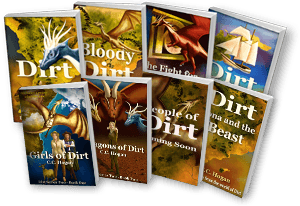Oelcraeft
The most ancient of beliefs
Early Beliefs
Here, look out, and know
As we toil, we tend, we sow
Rejoice in the life bringing light
Caring, caressing, bright.
This fragment from an early song of the Red Mountain Dragon people reflects the very early beliefs that were based on the natural world that was experienced by those coping with their world.
These early beliefs from some twenty millennia or more ago, though not directly shared between humans, dragons and Callistons, or even between neighbouring communities, were all very similar as they reflected common experiences.
There were some notable differences. Most especially the greater dragon peoples, being high fliers, see the world very differently to land based peoples such as humans and Callistons. A dragon's sense of a horizon is different and is not seen as an unreachable goal in the same way as rivers and mountains are not seen as barriers. In a religious sense, dragons had an appreciation of the linked up completeness of the world much earlier than other peoples and they lost their earlier, local beliefs earlier than other groups.
It is unknown where the idea of a single being or creator was first formed, but some feel that it grew up at the same times as two parallel beliefs formed about the origins of the speaking peoples, dragons and humans in particular.
At these early times, contrary to what is believed by some modern religions, it was thought that the Dragons and Callistons came to the world of Dirt first, with the humans arriving late. Dirt was an empty world before the events. Dragons believed that the mountain on the isle of Taken was the route the spirits of dragons who had died took to another life and the humans believed that the same mountain was the route taken by early humans when they first arrived on Dirt. Some also believed that the spirits of humans still arrived at Taken before being taken to the body of a newly born child at their birth.
Both beliefs embellished the idea of a single place - the single place where the spirits of dragons went to and a single place from whence came the humans. It must be pointed out that the Callistons did not subscribe to either of these beliefs nor did they have an equivalent of their own.
Oelcraeft
At this time a belief in a being called The Oeling grew. This "god" figure had no name as such so it was always "The" Oeling.
Oelcraeft, of the Craft of the Oeling, was a set of simple beliefs centred around this monotheistic principle that very much borrowed from earlier beliefs; the idea of the goodness of the sun, the power of the East in the form of a mythical third continent, the rewards of tending the land and so on.
it never became an organised religion and had no priests, but it had a commonality with all peoples on Dirt and they would share a moment of "mutual thanks" if they should meet. This religion grew up during the most peaceful times on the two continents and it celebrated commonality and did not seek to find differences.
The term "Giving Faith" became common at this time to describe these moments of thanks, a term later taken by The Church of the True. Another term that became common was Faestness which was used to describe someone who was particularly connected with the land and the world. It was a compliment, though the term, which loosely translates as Piety, became much corrupted in later millennia.
For the most part, Oelcraeft was a very gentle belief system; pure prayer as worship to The Oeling did not exist and neither did the idea of sins or forgiveness. Oelcraeft, though dying out by the time of Oran Helting, lasted for some twenty thousand years in one form or another and some in isolated communities still follow it's tenets even now.





